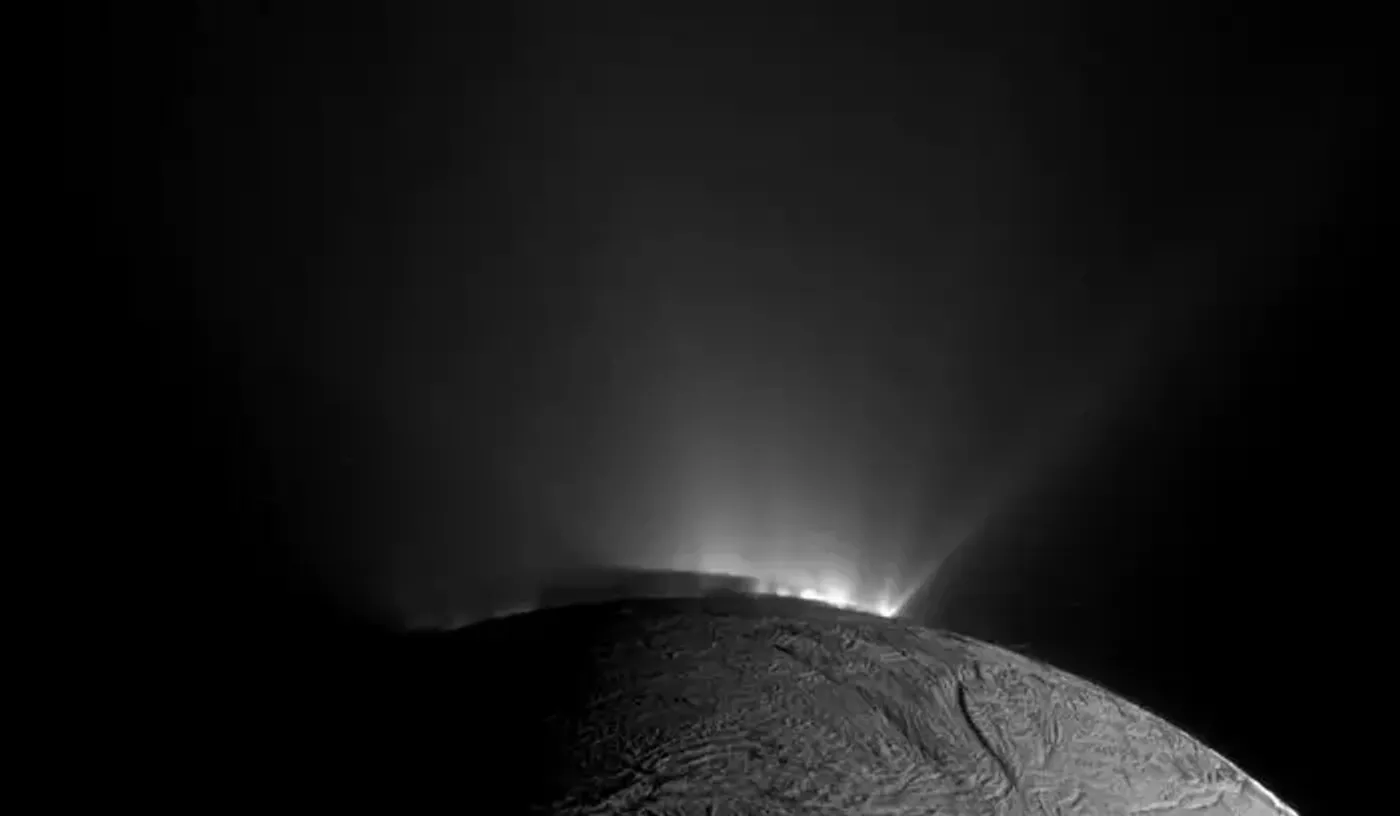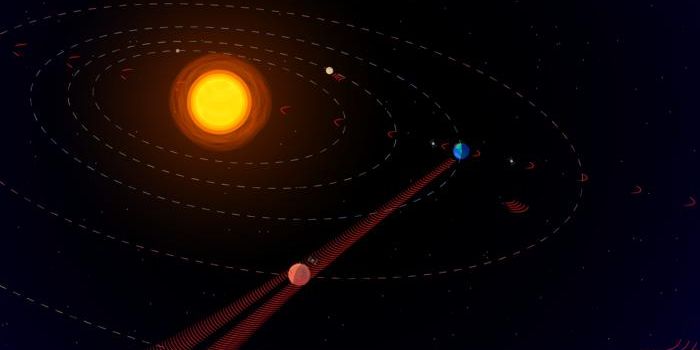NASA Identifies 17 Exoplanets with Potential for Life-Supporting Oceans
A recent study published in The Astrophysical Journal and presented at this week’s American Geophysical Union Annual Meeting 2023 examines how 17 exoplanets could harbor interior oceans of liquid water, and possibly even geysers, much like two moons within our solar system, Europa and Enceladus. This study was conducted by a team of researchers across academia and multiple research institutions and holds the potential to help scientists better understand the prospects and conditions for finding life beyond our solar system, including the examination of how life could form outside of a star’s habitable zone (HZ).
Image of Saturn’s moon, Enceladus, and its geysers taken by NASA’s Cassini spacecraft in November 2010, which could mirror exoplanets with interior oceans and geysers. (Credit: NASA/JPL-Caltech/Space Science Institute)
“Our analyses predict that these 17 worlds may have ice-covered surfaces but receive enough internal heating from the decay of radioactive elements and tidal forces from their host stars to maintain internal oceans,” said Dr. Lynnae Quick, who is a planetary geophysicist at NASA’s Goddard Space Flight Center and lead author of the study. “Thanks to the amount of internal heating they experience, all planets in our study could also exhibit cryovolcanic eruptions in the form of geyser-like plumes.”
For the study, the team used computational models estimated the ice shell thickness and geyser activity being exhibited on 17 confirmed exoplanets that are approximately the size of Earth, though less dense, meaning the rock could be substituted with water and ice. Two such exoplanets, Proxima Centauri b and LHS 1140 b, are relatively close to Earth at 4.2 and 48.8 light-years away, respectively, with Proxima Centauri b being the closest known exoplanet to Earth.
In the end, the team determined estimates for ice shell thickness was 190 feet (58 meters) for Proxima Centauri b and one mile (1.6 kilometers) for LHS 1140 b, which are both substantially smaller than Europa’s average ice shell thickness of 18 miles (29 kilometers). Additionally, the team determined estimates for geyser activity at 13.2 million pounds/second (6 million kilograms/second) for Proxima Centauri b and 639,640 pounds/second (290,000 kilograms/second) for LHS 1140 b, which are both substantially higher than Europa’s geyser activity of 4,400 pounds/second (2,000 kilograms/second).
“Since our models predict that oceans could be found relatively close to the surfaces of Proxima Centauri b and LHS 1140 b, and their rate of geyser activity could exceed Europa's by hundreds to thousands of times, telescopes are most likely to detect geological activity on these planets,” said Dr. Quick.
The team noted that given the astrobiological potential, future observations of small exoplanets should be considered, specifically with future space telescopes such as the Habitable Worlds Observatory.
How many exoplanets with internal oceans will researchers discover in the coming years and decades? Only time will tell, and this is why we science!
As always, keep doing science & keep looking up!
Sources: The Astrophysical Journal, EurekAlert!, NASA, NASA (1), NASA (2), NASA (3)









